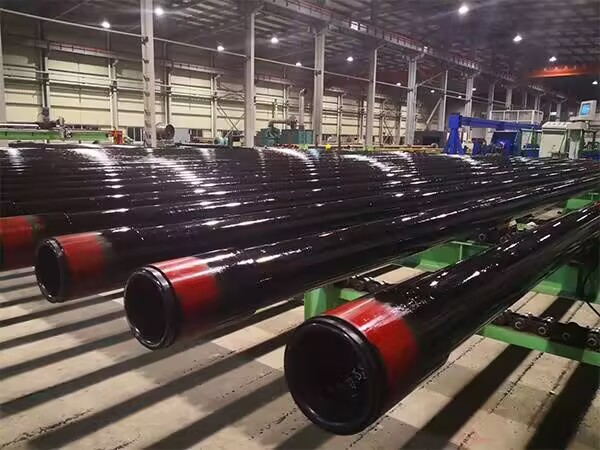Seamless casing and tubing features
In the oil and gas industry, seamless casing and tubing are indispensable types of tubing, which play an important role in the drilling, development and production of oil Wells. Because of their special properties and applications, these two kinds of pipes provide a reliable guarantee for oilfield operations. The characteristics of seamless casing and tubing are discussed from the perspective of material, process characteristics and application.

Features of seamless casing
Seamless casing is mainly used for wall support of oil and gas Wells to ensure the stability of the wall and prevent wall collapse. It is a necessary pipe in the drilling process, and its features include:
High strength and compressive properties:
The seamless casing is made of high-strength steel and can withstand the tremendous forces from formation pressure and drilling fluid to ensure wellbore stability.
Seamless structure:
Due to the seamless manufacturing process, the casing is free of weld defects, so it has higher tensile strength and high pressure resistance, suitable for deep Wells and complex geological conditions.
Multiple connection forms:
Casing is usually connected through threaded joints or special joints to ensure sealing performance and structural stability in high-pressure, high-stress environments.
Corrosion resistant treatment:
The casing surface is usually treated with corrosion protection, such as galvanized or phosphating, to resist the influence of corrosive media such as hydrogen sulfide and carbon dioxide.
Characteristics of tubing
Tubing is the pipe used to transport oil and gas from the oil well. Different from the supporting role of casing, it focuses more on medium transportation. Its main features include:
Lightweight and high toughness:
Tubing is lighter than casing, but it also requires strength and toughness to handle fluctuations in downhole pressure and temperature.
Multiple specifications and strong adaptability:
Tubing diameter and wall thickness variety, can be selected according to the depth of the well, production and fluid properties of the appropriate specifications, with strong adaptability.
Dynamic mechanical performance:
Tubing needs to withstand dynamic pressure from liquid flow and thermal stress caused by temperature changes, and its design emphasizes the stability and durability of the tubing.
Corrosion and wear resistance:
In environments with high acidic gas, salt and sand, tubing needs to have good corrosion and wear resistance, usually using chrome plating or inner coating technology.
The difference between seamless casing and tubing
Although seamless casing and tubing may be similar in form and material, they differ significantly in function, manufacturing process and use case:
Different functions:
Casing is used to support the well wall and ensure the safety of drilling and production operations.
Tubing is used to transport fluids such as oil and gas, and is an important pipeline in the production stage.
Mechanical characteristics:
Casing should withstand formation pressure and drilling fluid pressure, emphasizing pressure resistance.
Tubing should withstand dynamic fluid pressure, pay attention to tensile and wear resistance.
Process differences:
Casing is usually thicker and heavier, and the surface treatment focuses on corrosion resistance and pressure resistance.
The tubing design is relatively lightweight, with an emphasis on reducing fluid resistance and improving delivery efficiency.
Summary
As the key equipment in oil and gas exploitation, seamless casing and tubing have their unique performance and application scenarios. Seamless casing focuses on the safety and stability of downhole structures, while tubing focuses on the efficient transport of media. The reasonable collocation and use of the two is of great significance to the production efficiency and economic benefit of the oil field.
